Review: Apple's 2017 9.7" iPad with A9 CPU isn't a game-changer, but it isn't supposed to ...
The 2017 9.7-inch iPad isn't intended to revolutionize Apple's tablet offerings, but it does go a long way to unifying the product line, and paving the way for the future of the platform -- all starting at just $329.
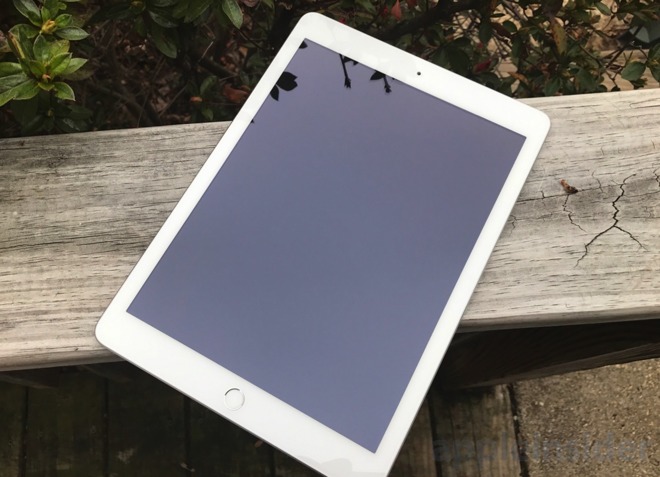
If you're here, you know what an iPad is, how it works, and why you'd want one -- and there's about a 30 percent chance you're reading this review on one. What's less clear are the differences between the side-step from the iPad Air 2 to the 2017 iPad.
First off, though, is despite Apple apparently chasing a lower price, that hasn't resulted in a build quality any less than you'd expect from an Apple product. Seams are tight, surfaces are straight and level, and the entire product just feels solid.
So, lets delve into what's different.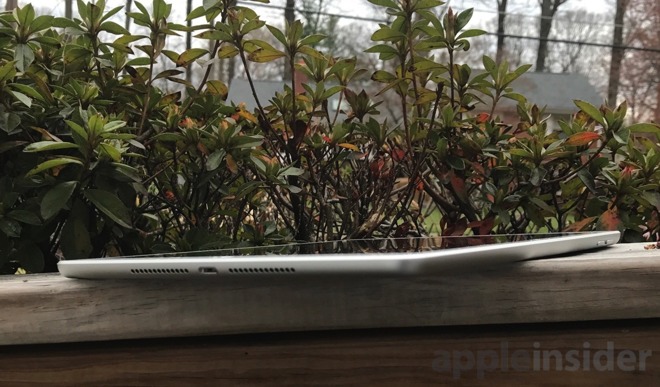
A lot has been made about the return to the non-laminated screen on the 2017 iPad. In the mayhem surrounding a new release, it can be easy to lose the forest from the trees and forget that the iPad Air 2 and iPad Pro are the only two 9.7-inch iPads that have the screen -- and there is literally no real reason to "upgrade" to the new iPad from those models.
Every other iPad, including the iPad Air has the non-laminated screen, so upgraders will have the same screen that they've always had, assuming that they aren't coming from the non-Retina iPad 2.
There may be a slight advantage to the new iPad's screen assembly over the iPad Air 2 or iPad Pro. If the glass breaks on the new iPad, it no longer necessitates a multi-hundred-dollar whole-screen replacement.
Yes, the laminated screen can make some users feel closer to the interface, but the non-laminated screen induces no lag or delay in icon movement -- nor has it ever.
It is not a Wide Color with True Tone display, like in the iPad Pro, nor should anyone have ever expected it to be. However, color fidelity is the same as the iPad has always had, prior to Apple's enhancements for the 9.7-inch iPad Pro.
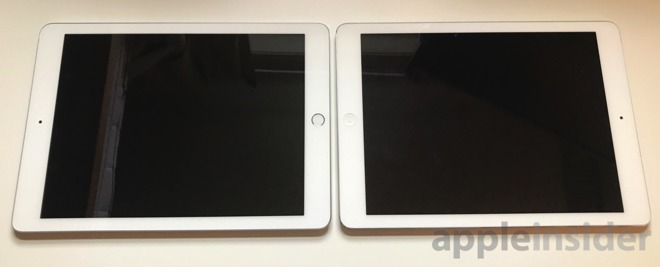
The iPad Air 2 with A8X processor was originally released in October 2014 and is also 240 mm tall, and 169.5mm wide --but is thinner, at just 6.1mm thick. The iPad Air 2 weighs 437 grams with wi-fi and 444 grams with LTE.
For comparison, the original iPad is 242.8mm tall, 189.7mm wide, 13.4mm thick, and weighs 680 grams.
In no way is the new iPad a burden to hold or use. While the difference in thickness between the 9.7-inch iPad Pro and the new iPad is barely noticeable, the difference in weight isn't really detectable between the two.
There's no physical lock/mute switch on the new iPad, and the speaker holes extend a bit further on the new iPad than most cases have holes for --but otherwise, even form-fitting protective cases like the Newer KX pictured here work just fine to protect the iPad, even if the volume switches don't line up.
Apple's Smart Cover for the iPad Air works fine and at least for now can be found inexpensively.
To test the speakers, we did a blind test with 10 participants of varying ages. Without telling the participants which hardware they were listening to, we played back an assortment of tracks on an iPad mini 2, iPad Air, iPad Air 2, 9.7-inch iPad Pro, and the 2017 iPad including audio books purchased from iTunes, plus ALAC-encoded electronica, classic rock, rap, orchestra, and live rock performances ripped from CD using iTunes default settings, from three feet and eight feet behind them.
Out of our 10 testers, at three feet, two identified the four speaker iPad Pro as having better quality, with the remainder calling the difference too close to tell between the four-speaker iPad Pro, the iPad Air 2, and the new iPad. At eight feet, none of our testers could tell the difference.
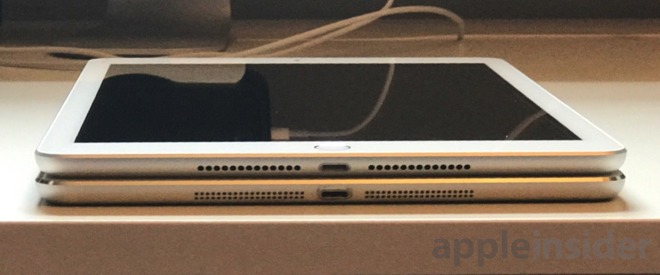
The new iPad hits 2410 in the Geekbench single-core performance metric, climbing to 4095 in multi-core. For comparison, the 9.7-inch iPad Air 2 from 2014 has a Geekbench score of 1782 and a multi-core rating of 3992, with the still available 9.7-inch iPad Pro has a single core score of 2944 and a multi-core 4786.
Looking at benchmarks for the Mac, the late 2015 i5-6600 iMac 27-inch Retina Display has a single-core score of 4840 with a multi-core score of 13,082. The early 2015 MacBook with 1.3Ghz Core M processor is a close analog benchmark-wise, and edges the new iPad out slightly in both single core and multicore performance.
The numbers don't quite tell the whole tale, though.
It's not quite clear what on the iPad utilizes multiple processors. In all of our real-world use, despite the benchmarks, the new dual-core iPad handily beat the triple-core A8X in the iPad Air 2. Apocryphally, the A-series processor doesn't utilize symmetrical multi-processing well, and if that is the case, that explains the real-world use cases like speedier app launching and web page loading that we've experienced since the iPad arrived.
As far as page loading goes, the new iPad has 802.11ac Wi-Fi -- only introduced to the iPad with the iPad Air 2. This in itself is a major upgrade for older iPad users, assuming that their networking gear is up to the task.

If you have the original iPad Air or older, and are looking to upgrade, the 2017 iPad is unquestionably a good buy. Owners of newer hardware, like the iPad Air 2 and 9.7-inch iPad Pro, can and should stand fast with what they have.
The new iPad is close to the 9.7-inch iPad Pro performance and fits right in where the now discontinued iPad Air 2 sat. A rumored refresh of the iPad Pro line will open that gap in performance and features, and with any luck, won't come with a higher price point.
For now, though, Apple has aimed specifically at people with older iPads, in an effort to convince them to get a new iPad. The 2017 9.7-inch iPad bullseyes the target that Apple sought to hit. Those looking for Apple's mightiest iPad regardless of cost just need to sit this one out.
Readers can also save money at AppleInsider partners Adorama and B&H. The Apple authorized resellers are throwing in free shipping with every iPad purchase, and neither retailer will collect sales tax on orders shipped outside NY and NJ. For the latest deals on all of the new configurations, please visit our 9.7-inch iPad Price Guide.
9.7-inch iPads
32GB Silver (Wi-Fi Only, MP2G2LL/A) for $329.00 @Adorama (No tax outside NY & NJ)
32GB Silver (Wi-Fi Only, MP2G2LL/A) for $329.00 @B&H (No tax outside NY & NJ)
32GB Space Gray (Wi-Fi Only, MP2F2LL/A) for $307.50 @Adorama ($21 off + no tax outside NY & NJ)
32GB Space Gray (Wi-Fi Only, MP2F2LL/A) for $329.00 @B&H (No tax outside NY & NJ)
32GB Gold (Wi-Fi Only, MPGT2LL/A) for $329.00 @Adorama (No tax outside NY & NJ)
32GB Gold (Wi-Fi Only, MPGT2LL/A) for $329.00 @B&H (No tax outside NY & NJ)
32GB Silver (Wi-Fi + Cellular, MP252LL/A) for $459.00 @Adorama (No tax outside NY & NJ)
32GB Silver (Wi-Fi + Cellular, MP252LL/A) for $459.00 @B&H (No tax outside NY & NJ)
32GB Space Gray (Wi-Fi + Cellular, MP242LL/A) for $459.00 @Adorama (No tax outside NY & NJ)
32GB Space Gray (Wi-Fi + Cellular, MP242LL/A) for $459.00 @B&H (No tax outside NY & NJ)
32GB Gold (Wi-Fi + Cellular, MPGA2LL/A) for $459.00 @Adorama (No tax outside NY & NJ)
32GB Gold (Wi-Fi + Cellular, MPGA2LL/A) for $459.00 @B&H (No tax outside NY & NJ)
128GB Silver (Wi-Fi Only, MP2J2LL/A) for $429.00 @Adorama (No tax outside NY & NJ)
128GB Silver (Wi-Fi Only, MP2J2LL/A) for $429.00 @B&H (No tax outside NY & NJ)
128GB Space Gray (Wi-Fi Only, MP2H2LL/A) for $429.00 @Adorama (No tax outside NY & NJ)
128GB Space Gray (Wi-Fi Only, MP2H2LL/A) for $429.00 @B&H (No tax outside NY & NJ)
128GB Gold (Wi-Fi Only, MPGW2LL/A) for $429.00 @Adorama (No tax outside NY & NJ)
128GB Silver (Wi-Fi + Cellular, MP2E2LL/A) for $559.00 @Adorama (No tax outside NY & NJ)
128GB Silver (Wi-Fi + Cellular, MP2E2LL/A) for $559.00 @B&H (No tax outside NY & NJ)
128GB Space Gray (Wi-Fi + Cellular, MP2D2LL/A) for 559.00 @Adorama (No tax outside NY & NJ)
128GB Space Gray (Wi-Fi + Cellular, MP2D2LL/A) for $559.00 @B&H (No tax outside NY & NJ)
128GB Gold (Wi-Fi + Cellular, MPGC2LL/A) for $559.00 @Adorama (No tax outside NY & NJ)
128GB Gold (Wi-Fi + Cellular, MPGC2LL/A) for $559.00 @B&H (No tax outside NY & NJ)
Adorama and B&H will not collect sales tax on orders shipped outside NY & NJ.
Add AppleCare
You can easily tack on an AppleCare extended protection plan to these iPads for $99 by selecting the AppleCare option immediately after you press the "Add to Cart" button on each website.

If you're here, you know what an iPad is, how it works, and why you'd want one -- and there's about a 30 percent chance you're reading this review on one. What's less clear are the differences between the side-step from the iPad Air 2 to the 2017 iPad.
First off, though, is despite Apple apparently chasing a lower price, that hasn't resulted in a build quality any less than you'd expect from an Apple product. Seams are tight, surfaces are straight and level, and the entire product just feels solid.
So, lets delve into what's different.
Non-laminated screen

A lot has been made about the return to the non-laminated screen on the 2017 iPad. In the mayhem surrounding a new release, it can be easy to lose the forest from the trees and forget that the iPad Air 2 and iPad Pro are the only two 9.7-inch iPads that have the screen -- and there is literally no real reason to "upgrade" to the new iPad from those models.
Every other iPad, including the iPad Air has the non-laminated screen, so upgraders will have the same screen that they've always had, assuming that they aren't coming from the non-Retina iPad 2.
There may be a slight advantage to the new iPad's screen assembly over the iPad Air 2 or iPad Pro. If the glass breaks on the new iPad, it no longer necessitates a multi-hundred-dollar whole-screen replacement.
Yes, the laminated screen can make some users feel closer to the interface, but the non-laminated screen induces no lag or delay in icon movement -- nor has it ever.
It is not a Wide Color with True Tone display, like in the iPad Pro, nor should anyone have ever expected it to be. However, color fidelity is the same as the iPad has always had, prior to Apple's enhancements for the 9.7-inch iPad Pro.

Dimensions
The new iPad is 240mm tall, 169.5mm wide, has a thickness of 7.5mm, and weighs 469 grams with Wi-Fi and 478 grams with LTE. The original iPad Air with A7 processor from October 2013 is dimensionally identical to the new iPad, including weight.The iPad Air 2 with A8X processor was originally released in October 2014 and is also 240 mm tall, and 169.5mm wide --but is thinner, at just 6.1mm thick. The iPad Air 2 weighs 437 grams with wi-fi and 444 grams with LTE.
For comparison, the original iPad is 242.8mm tall, 189.7mm wide, 13.4mm thick, and weighs 680 grams.
In no way is the new iPad a burden to hold or use. While the difference in thickness between the 9.7-inch iPad Pro and the new iPad is barely noticeable, the difference in weight isn't really detectable between the two.
Protective cases
With an identical size and shape to the iPad Air, you'd think that cases from the older model would be fine. Some are, but some things don't line up right.There's no physical lock/mute switch on the new iPad, and the speaker holes extend a bit further on the new iPad than most cases have holes for --but otherwise, even form-fitting protective cases like the Newer KX pictured here work just fine to protect the iPad, even if the volume switches don't line up.
Apple's Smart Cover for the iPad Air works fine and at least for now can be found inexpensively.
Back to two speakers
The speakers on the iPad have always been adequate. There's just not a lot of room in the iPad for large speaker chambers. The 2017 iPad has two speakers, like the iPad Air 2 -- with the iPad Pro having four.If you have the original iPad Air or older, and are looking to upgrade, the 2017 iPad is unquestionably a good buy.
To test the speakers, we did a blind test with 10 participants of varying ages. Without telling the participants which hardware they were listening to, we played back an assortment of tracks on an iPad mini 2, iPad Air, iPad Air 2, 9.7-inch iPad Pro, and the 2017 iPad including audio books purchased from iTunes, plus ALAC-encoded electronica, classic rock, rap, orchestra, and live rock performances ripped from CD using iTunes default settings, from three feet and eight feet behind them.
Out of our 10 testers, at three feet, two identified the four speaker iPad Pro as having better quality, with the remainder calling the difference too close to tell between the four-speaker iPad Pro, the iPad Air 2, and the new iPad. At eight feet, none of our testers could tell the difference.

Benchmarks
As expected and predicted, the new iPad is a speedster. The benchmarks using Geekbench 4 that we, and other users, have obtained are a bit faster than expected.The new iPad hits 2410 in the Geekbench single-core performance metric, climbing to 4095 in multi-core. For comparison, the 9.7-inch iPad Air 2 from 2014 has a Geekbench score of 1782 and a multi-core rating of 3992, with the still available 9.7-inch iPad Pro has a single core score of 2944 and a multi-core 4786.
Looking at benchmarks for the Mac, the late 2015 i5-6600 iMac 27-inch Retina Display has a single-core score of 4840 with a multi-core score of 13,082. The early 2015 MacBook with 1.3Ghz Core M processor is a close analog benchmark-wise, and edges the new iPad out slightly in both single core and multicore performance.
The numbers don't quite tell the whole tale, though.
Real-world performance
The new iPad isn't just fast by the numbers, it's quick in every day use. It edges out the iPad Air 2 in benchmarks. With the A9 processor, it utterly destroys the iPad Air and older models in every conceivable performance metric, bar none.It's not quite clear what on the iPad utilizes multiple processors. In all of our real-world use, despite the benchmarks, the new dual-core iPad handily beat the triple-core A8X in the iPad Air 2. Apocryphally, the A-series processor doesn't utilize symmetrical multi-processing well, and if that is the case, that explains the real-world use cases like speedier app launching and web page loading that we've experienced since the iPad arrived.
As far as page loading goes, the new iPad has 802.11ac Wi-Fi -- only introduced to the iPad with the iPad Air 2. This in itself is a major upgrade for older iPad users, assuming that their networking gear is up to the task.

There is a shift coming
Like we said initially, the new iPad follows in the footsteps of the iPhone SE in more ways than one. The 2017 iPad is the closest thing from Apple that approaches the lower end of the tablet market.If you have the original iPad Air or older, and are looking to upgrade, the 2017 iPad is unquestionably a good buy. Owners of newer hardware, like the iPad Air 2 and 9.7-inch iPad Pro, can and should stand fast with what they have.
The new iPad is close to the 9.7-inch iPad Pro performance and fits right in where the now discontinued iPad Air 2 sat. A rumored refresh of the iPad Pro line will open that gap in performance and features, and with any luck, won't come with a higher price point.
For now, though, Apple has aimed specifically at people with older iPads, in an effort to convince them to get a new iPad. The 2017 9.7-inch iPad bullseyes the target that Apple sought to hit. Those looking for Apple's mightiest iPad regardless of cost just need to sit this one out.
Score: 4.5 out of 5

Where to buy
The new 2017 iPad is priced starting at $329 for the entry-level 32-gigabyte Wi-Fi-only model, and $100 more for 128 gigabytes. Cellular-capable models are also available starting at $459.Readers can also save money at AppleInsider partners Adorama and B&H. The Apple authorized resellers are throwing in free shipping with every iPad purchase, and neither retailer will collect sales tax on orders shipped outside NY and NJ. For the latest deals on all of the new configurations, please visit our 9.7-inch iPad Price Guide.
9.7-inch iPads
32GB Silver (Wi-Fi Only, MP2G2LL/A) for $329.00 @Adorama (No tax outside NY & NJ)
32GB Silver (Wi-Fi Only, MP2G2LL/A) for $329.00 @B&H (No tax outside NY & NJ)
32GB Space Gray (Wi-Fi Only, MP2F2LL/A) for $307.50 @Adorama ($21 off + no tax outside NY & NJ)
32GB Space Gray (Wi-Fi Only, MP2F2LL/A) for $329.00 @B&H (No tax outside NY & NJ)
32GB Gold (Wi-Fi Only, MPGT2LL/A) for $329.00 @Adorama (No tax outside NY & NJ)
32GB Gold (Wi-Fi Only, MPGT2LL/A) for $329.00 @B&H (No tax outside NY & NJ)
32GB Silver (Wi-Fi + Cellular, MP252LL/A) for $459.00 @Adorama (No tax outside NY & NJ)
32GB Silver (Wi-Fi + Cellular, MP252LL/A) for $459.00 @B&H (No tax outside NY & NJ)
32GB Space Gray (Wi-Fi + Cellular, MP242LL/A) for $459.00 @Adorama (No tax outside NY & NJ)
32GB Space Gray (Wi-Fi + Cellular, MP242LL/A) for $459.00 @B&H (No tax outside NY & NJ)
32GB Gold (Wi-Fi + Cellular, MPGA2LL/A) for $459.00 @Adorama (No tax outside NY & NJ)
32GB Gold (Wi-Fi + Cellular, MPGA2LL/A) for $459.00 @B&H (No tax outside NY & NJ)
128GB Silver (Wi-Fi Only, MP2J2LL/A) for $429.00 @Adorama (No tax outside NY & NJ)
128GB Silver (Wi-Fi Only, MP2J2LL/A) for $429.00 @B&H (No tax outside NY & NJ)
128GB Space Gray (Wi-Fi Only, MP2H2LL/A) for $429.00 @Adorama (No tax outside NY & NJ)
128GB Space Gray (Wi-Fi Only, MP2H2LL/A) for $429.00 @B&H (No tax outside NY & NJ)
128GB Gold (Wi-Fi Only, MPGW2LL/A) for $429.00 @Adorama (No tax outside NY & NJ)
128GB Silver (Wi-Fi + Cellular, MP2E2LL/A) for $559.00 @Adorama (No tax outside NY & NJ)
128GB Silver (Wi-Fi + Cellular, MP2E2LL/A) for $559.00 @B&H (No tax outside NY & NJ)
128GB Space Gray (Wi-Fi + Cellular, MP2D2LL/A) for 559.00 @Adorama (No tax outside NY & NJ)
128GB Space Gray (Wi-Fi + Cellular, MP2D2LL/A) for $559.00 @B&H (No tax outside NY & NJ)
128GB Gold (Wi-Fi + Cellular, MPGC2LL/A) for $559.00 @Adorama (No tax outside NY & NJ)
128GB Gold (Wi-Fi + Cellular, MPGC2LL/A) for $559.00 @B&H (No tax outside NY & NJ)
Adorama and B&H will not collect sales tax on orders shipped outside NY & NJ.
Add AppleCare
You can easily tack on an AppleCare extended protection plan to these iPads for $99 by selecting the AppleCare option immediately after you press the "Add to Cart" button on each website.

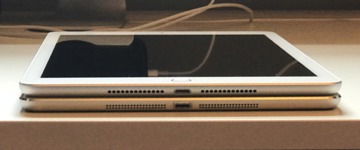

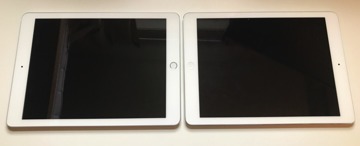
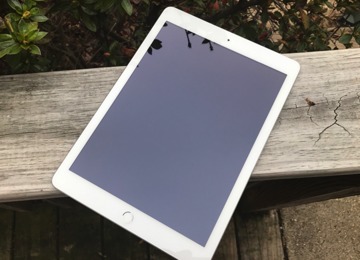
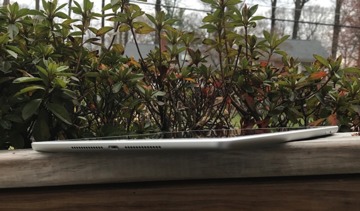


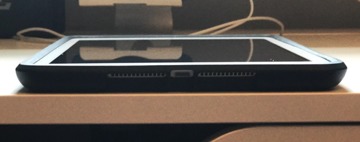
Comments
https://en.wikiquote.org/wiki/Paul_Thurrott
In any event an interesting update that won't be around long. Why do I say that? Well if the rumors about Apple stopping payment to Imagination for their GPU tech in two years is accurate, then that mean all Imagination using SoC will have to be out of Apples product lines by then. In fact for this to happen and Apple to maintain their current release strategy I'm expecting this years new iPad Pros and iPhones to have this new Apple GPU. That would allow them to phase out the old imagination hardware next year as the chips are handed down to the cheaper product lines.
Things are about to get real interesting for the tech standpoint in iOS land.
I want specific features in my next iPad, like the Pencil, and TrueTone display, so the new inexpensive upgrade is out of the question for me. And on the one hand, that's fine for Apple, since they're going to get more money out of me after 5 years, then again, are they going to get that much more than they're going to make out of volume sales of product they had to invest very little startup costs into?
In general I get distinctions between Pro and consumer models, but Apple kind of went backwards from the Air 2, and probably shouldn't have where it counts the most -- the end user interface. Then again, that's likely the most obvious distinction between the 9.7" Pro, just as the 4" display on the SE is the most obvious difference between the 6s & 7. Tough call.
It has to match my Se.
I know, I know....
Great review, BTW!
That's assuming that Apple's GPU isn't already in recent A series chips and would only need to be activated. Nobody really knows what's on the last five A-series chips. Most of it is mysterious expanses of transistors.
Since battery life is measured based on the display being 50% brightness, I suppose a less efficient backlight or one with a much higher brightness could lead to the iPad still being around the same timeframe, but we have seen an iPad using a smaller node in an A-series chip lead to longer battery life without Apple making mention of it.
If one needs or wants exceptional color or creation input stylus, then they're in the market for a Pro, not the entry level model.
PS: I have a hunch that APFS could lead to power savings since, for example, file copies are instance instead of taking up CPU cycles. While this may not be as common on iOS v macOS, I'm wondering if you're also testing battery life on iPads before and after the update to 10.3.x.
Perhaps once APFS is useable for a boot volume and you can still select HFS+, we'll be able to see comparative tests between the two file systems.